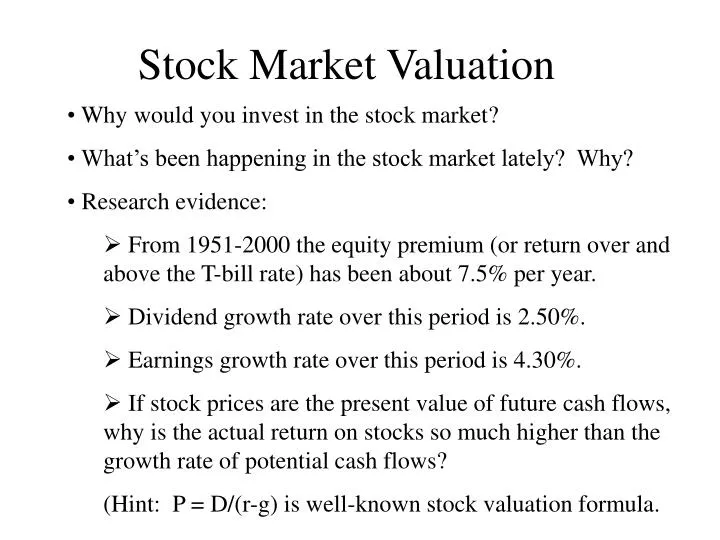The US-China Trade War: Who Conceded First?

Table of Contents
Early Stages of the Trade War and Initial Tariffs
The US-China trade war's beginning can be traced to the Trump administration's imposition of tariffs on various Chinese goods, starting in 2018. These tariffs, initially targeting specific sectors like steel and aluminum, quickly expanded to a broader range of products. This move was justified by the administration as a necessary measure to address what it perceived as unfair trade practices by China, including intellectual property theft and forced technology transfer. China responded swiftly with its own retaliatory tariffs on US goods, triggering a tit-for-tat escalation that sent shockwaves through global markets.
- Specific examples of early tariffs: The US imposed tariffs on $34 billion worth of Chinese goods in July 2018, followed by further increases on hundreds of billions of dollars’ worth of imports. China responded in kind, targeting agricultural products and other US exports.
- Impact on respective economies: These initial tariffs led to increased costs for businesses and consumers on both sides, impacting economic growth and creating uncertainty in the global supply chain. Some sectors, particularly agriculture in the US and manufacturing in China, were disproportionately affected.
- Statements by key figures: Statements by President Trump and President Xi Jinping during this period were often characterized by strong rhetoric and accusations of unfair trade practices. The initial rounds of tariffs were framed as leverage in ongoing negotiations.
Escalation and the Negotiation Process
The initial tariffs marked the beginning of a protracted period of escalation. Each side responded to the other's actions with further tariffs, increasing the scope and intensity of the trade war. This back-and-forth intensified the economic pressure and led to several rounds of high-stakes negotiations between the US and China. These talks, often characterized by periods of both optimism and pessimism, aimed to find a resolution to the escalating conflict and reduce the damaging impact on global trade.
- Key events and dates: The negotiations involved multiple high-level meetings, with significant events including the G20 summit in Osaka in 2019 and various rounds of bilateral talks.
- Concessions offered (or not offered): During these negotiations, both sides made offers and counter-offers, but significant concessions remained elusive for a considerable period. Each side attempted to maintain leverage while simultaneously avoiding the most devastating economic impacts of prolonged tariffs.
- Shifting power dynamics: The power dynamics shifted throughout the negotiation process, with both countries experiencing periods of strength and weakness based on economic conditions and domestic political factors.
Analyzing Specific Concessions: The "Phase One" Deal
A turning point in the US-China trade war came with the signing of the "Phase One" trade deal in January 2020. This agreement marked a temporary de-escalation, offering some relief from the escalating tariffs.
- Key commitments from China: China committed to significantly increase its purchases of US goods and services over a two-year period, targeting specific sectors like agriculture and energy.
- Tariff rollbacks by the US: The US agreed to roll back some existing tariffs on Chinese goods, though many remained in place.
- Assessment of concessions: While the "Phase One" deal represented a significant step toward de-escalation, the question of whether it constituted a major concession by either side remains debatable. The agreement involved mutual compromises, and it’s difficult to definitively declare a “winner” or “loser.”
Post "Phase One" Developments and Long-Term Implications
Following the "Phase One" deal, the US-China trade relationship remained complex and fraught with tensions. While the agreement provided some temporary stability, various trade disputes continued.
- Impact of the COVID-19 pandemic: The COVID-19 pandemic added another layer of complexity to the trade relationship, disrupting supply chains and exacerbating existing tensions.
- Ongoing trade disputes: Areas of contention continued, including concerns over intellectual property rights, technology transfer, and market access.
- Long-term implications: The long-term implications of the US-China trade war for global trade and the world economy are still unfolding. The experience highlights the interconnectedness of global markets and the potential for significant disruptions caused by trade conflicts.
Conclusion: Determining the First Concession in the US-China Trade War
Determining who conceded first in the US-China trade war is a complex question without a simple answer. Both sides made concessions throughout the conflict, with the timing and significance of these concessions varying depending on the perspective and metrics used. The "Phase One" deal represented a notable shift, but it was the culmination of a prolonged negotiation process filled with both escalations and tentative compromises. The economic and political implications of the trade war highlight the need for careful and considered approaches to international trade relations. The ongoing consequences of the US-China trade war emphasize the need for continued research and analysis of international economic policy. To deepen your understanding of this crucial event, we encourage you to explore additional resources on the US-China Trade War and its lasting impact on global trade. Further research into the specific tariff schedules and negotiation transcripts can provide a more nuanced understanding of this complex situation.

Featured Posts
-
 Stock Market Valuation Anxiety Bof A Offers A Calming Perspective
May 15, 2025
Stock Market Valuation Anxiety Bof A Offers A Calming Perspective
May 15, 2025 -
 Snelle Actie Npo Na Zorgen Over Frederieke Leeflang
May 15, 2025
Snelle Actie Npo Na Zorgen Over Frederieke Leeflang
May 15, 2025 -
 Nhl Announces Canadian Partnership With Ndax For Stanley Cup Playoffs
May 15, 2025
Nhl Announces Canadian Partnership With Ndax For Stanley Cup Playoffs
May 15, 2025 -
 The Hollywood Strike What It Means For The Film Industry And Its Workers
May 15, 2025
The Hollywood Strike What It Means For The Film Industry And Its Workers
May 15, 2025 -
 Ufc 314 Paddy Pimbletts Top Three Hitlist Includes Ilia Topuria
May 15, 2025
Ufc 314 Paddy Pimbletts Top Three Hitlist Includes Ilia Topuria
May 15, 2025
Latest Posts
-
 Best Bets Round 2 Nba And Nhl Playoffs
May 15, 2025
Best Bets Round 2 Nba And Nhl Playoffs
May 15, 2025 -
 Nba And Nhl Playoffs Best Bets For Round 2
May 15, 2025
Nba And Nhl Playoffs Best Bets For Round 2
May 15, 2025 -
 Berlins Underground Exploring The Possibility Of U Bahn Techno Events
May 15, 2025
Berlins Underground Exploring The Possibility Of U Bahn Techno Events
May 15, 2025 -
 Bombay High Court Dismisses Challenge To Dial 108 Ambulance Contract
May 15, 2025
Bombay High Court Dismisses Challenge To Dial 108 Ambulance Contract
May 15, 2025 -
 Verhandlungen Nach Schlichtung Drohen Bvg Streiks Und Entlassungen
May 15, 2025
Verhandlungen Nach Schlichtung Drohen Bvg Streiks Und Entlassungen
May 15, 2025
